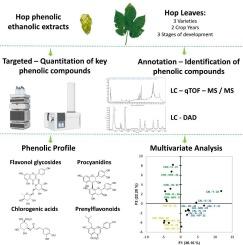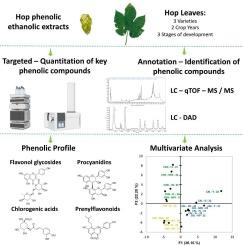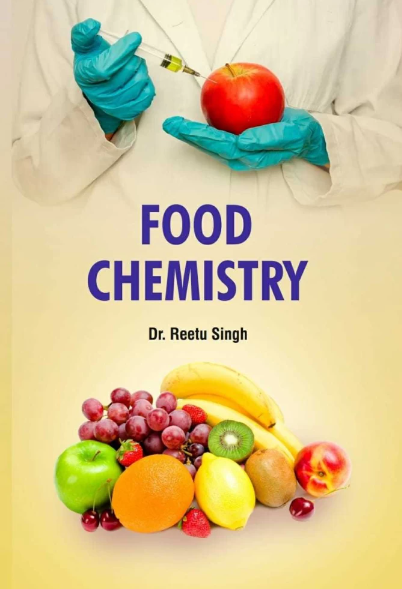酒花叶片生物活性化合物的价值评估:不同品种、作物年份和发展阶段的酚类物质的鉴定和定量。
IF 9.8
1区 农林科学
Q1 CHEMISTRY, APPLIED
引用次数: 0
摘要
酒花叶是酒花球果采收过程中产生的一种副产品,含有对食品或饮料应用具有潜在价值的酚类化合物。然而,酒花叶片中丰富的酚类化合物在很大程度上仍未被量化。这项研究对三个具有重要商业价值的酒花品种在开花后不同发育阶段的两个作物年度的酒花叶片中的酚类化合物进行了定量分析。使用 LC-ESI-qTOF-MS/MS 和 HPLC-DAD 对乙醇酒花提取物进行了表征,对酚类物质和苦味树脂进行了标注和定量。酒花叶片的酚类物质呈现出相当大的结构多样性,与各自的球果酚类物质有显著差异。山奈酚/槲皮素 3-O-糖苷和绿原酸是含量最高的亚类,此外还有酚酸、原花青素、前黄酮类和苦味树脂。酚类物质的特征主要取决于品种,也受作物年份和生长发育的影响。黄酮醇 3-O 糖苷是造成品种差异的主要化合物。研究结果证明了酒花叶提取物中酚类化合物的结构多样性和高浓度,以及其作为生物活性物质来源的价值潜力。本文章由计算机程序翻译,如有差异,请以英文原文为准。


Valorisation of hop leaves for their bioactive compounds: Identification and quantification of phenolics across different varieties, crop years and stages of development.
Hop leaves, a by-product from hop cone harvesting, contain phenolic compounds of potential value for food or beverage applications. However, the abundant phenolics in hop leaves remain largely unquantified. This study quantified phenolics in hop leaves over two crop years, for three commercially significant varieties, at different developmental stages post-flowering. Ethanolic hop extracts were characterised using LC-ESI-qTOF-MS/MS and HPLC-DAD for the annotation and quantification of phenolics and bitter resins. Hop leaf phenolic profile exhibited considerable structural diversity, differing significantly from that of respective cones. Kaempferol/quercetin 3-O-glycosides and chlorogenic acids were the most abundant sub-groups with phenolic acids, procyanidins, prenylflavonoids and bitter resins also present. Phenolic profile was mainly variety-dependent with some crop year and developmental effects. Flavonol 3-O-glycosides were the main compounds driving varietal differences. Findings demonstrate the structural diversity and high concentrations of phenolic compounds in hop leaf extracts and their potential as a source of bioactives for valorisation.
求助全文
通过发布文献求助,成功后即可免费获取论文全文。
去求助
来源期刊

Food Chemistry
工程技术-食品科技
CiteScore
16.30
自引率
10.20%
发文量
3130
审稿时长
122 days
期刊介绍:
Food Chemistry publishes original research papers dealing with the advancement of the chemistry and biochemistry of foods or the analytical methods/ approach used. All papers should focus on the novelty of the research carried out.
 求助内容:
求助内容: 应助结果提醒方式:
应助结果提醒方式:


